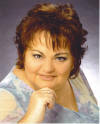
Mentoring and receiving instruction
“If you be a lover of instruction, you will be well instructed.” Isocrates
While I was on my morning walk the other day I saw a vine clinging to a tree. It reminded me of mentoring. Weird I know, but then, that’s how my crazy mind works sometimes. Most times. The vine starts out crawling along the ground, it makes its way to the tree, then clings while it grows ever upwards.
Mentoring is partnering with someone more knowledgeable for the purpose of instruction. The corporate world has grasped this concept in a big way, and it's successful among youth programs. Have you ever thought about a mentor in the ‘trade’ of romance writing?
How would I do that? While the question seems a big one, may I add some of my own thoughts on this topic? While you may not need a mentor in the true sense of the word, there is a wealth of information out there already available for newbies to glean from.
Firstly, read widely and generally. Find the niche within the market you feel most comfortable with, (that is, if you haven’t already decided). The one you enjoy reading will prove to be the most obvious place to start. For example – It’s no good trying to write a paranormal if you don’t enjoy reading paranormals, even if the market is huge.
Secondly, find a few writers whose work you love and examine their content, voice and technique. Check out if they have a web presence and learn all you can from them.
Next - join groups, associations and forums with the aim of seeking out those more knowledgeable on topics of interest to you. Historical writers could do worse than forming a professional relationship with a history buff. And, while you’re involved in those group/forum situations don’t be afraid to ask questions. Make a list if necessary, to be prepared. Most people are happy to share their insight of what they’re passionate about. You may find someone who will help you more than you could ever imagine.
Even by entering competitions with feedback, you are submitting your work to others who’ve walked further up the road to publication than you. This feedback can be a valuable source of instruction.
Like the vine, use the strength of the other for your upward growth.
“Ability is what you're capable of doing. Motivation determines what you do. Attitude determines how well you do it.” Lou Holtz
Any othe ideas I haven't thought of?
Regards Annie
Friday, March 28, 2008
To cling or not to cling
Posted by
Annie Doyle
at
10:53 PM
8
comments
![]()
Saturday, March 22, 2008
What is Romantic?
Tell me your thoughts about a romantic setting?
It's funny how we all have a different opinion, even about what constitutes a romantic setting. Last night there was a beautiful full moon with clear sky and stars. Lovely. I called my family out to see it and the response was varied. One howled like a wolf!! And so did his fiance (they are the perfect match aren't they? LOL) My husband wished he was on the beach fishing. The children were just in awe and looking for the cow that jumped over it. I thought it was romantic.
My family lives in a gorgeous sub-tropical paradise on the coast of Australia and although we love where we live, appreciate it's natural beauty and get out in it as much as possible, to us it's still just home. Many come for honeymoons, weddings and romantic get-aways while everyday life goes on around us. However, I never take it for granted and even though I have traveled quite a lot, there's no place like my home.
Valerie Parv wrote about romantic settings in her book The Art of Romance Writing. She says "many writers are surprised to find the setting is not the most important element" when writing a romance. She says many of her powerful settings are just everyday places. While setting is important, it is the relationship between the hero and the heroine that keeps us glued to the page.
What's you idea of a romantic setting and have you used your special place in a manuscript yet?
Regards Annie
Posted by
Annie Doyle
at
3:05 PM
6
comments
![]()
Friday, March 14, 2008
Collage helps my creative process
As promised here is my collage of ideas which feeds my creative process regarding story construction.
I love Powerpoint. Starting with a blank page, I can add big or small pix, text or whatever. For my writing collages it's mainly for pix, though.
I'm attaching some jpg files of the Powerpoint slides I have used for my previous story. I usually keep one page or more for each topic. EG the first one is for heroine's setting: (Click on images to see larger versions.)
I just look for pix online that feature aspects I'm thinking I might use. (Add to page via copy and paste) In this story the heroine owns a B&B and is where she meets up again with school friend hero. Quite a lot of interaction and different scenes happen here and in the garden.
Another slide is setting pix for the rockclimbing and abseiling aspects of the story.
Here the main characters H/h have a slide but other settings like the country pub are here too. If I can't find a pic that's exactly as I visualize, I just insert a couple of different ones for an eclectic mix!!
The pix can be edited easily and shuffled on the slide to format or resize or cut and pasted to another page as required.
This slide was for careers, cars and children.
The best thing about a Powerpoint file is it can be as big or small as needed because if more inspiration is needed then an entire slide can be inserted, cut or the order rearranged by dragging and dropping.
I found these slides most useful for getting the feel for the settings. Pix mostly came from real estate ads, these helped big time. AND the entire display is always only a click away, filed with my WIP.
As usual photo files can be quite large, though usually online they are already resized. In order for the Powerpoint file to remain small, it is important to format the pictures before saving the file. Here's what I do: Right click on the pic, then choose Format Picture, then choose in lower left of box Compress, in Compress Pictures box click on all of these: All Pictures in Document; Resolution to Web/Screen (you will notice the res changes to 96 dpi) and BOTH lower options for compressing and deleting cropped sections of pictures. Click OK then OK again in the other Format Picture box.
Also when I am done I select all pix on each page by clicking the mouse in the top left of the slide and dragging it to form a box down to the bottom right. This selects all pix on the slide and then I do the following: In box after right click choose Grouping > click Group (this selects all pictures within the dotted line box made from the mouse). If you want to edit or add pix you need to do the same only Ungroup beforehand. This step is not necessary but I find it useful. Once these are grouped they can be saved as jpg files or whatever, which is what I did for this blog.
I hope none of this sounded basic or condescending - that was not my intention.
Let me know if any of this was useful or not, or if I omitted some aspect.
Regards Annie
Posted by
Annie Doyle
at
11:27 AM
8
comments
![]()
Saturday, March 8, 2008
A novel, creative process
I wanted to extend the ‘creative flow’ theme of my blog entries lately to include the creative process of constructing a story worth writing.
Emma Darcy says in The Secrets of Successful Romance Writing that she starts with a single situation and visualizes it in her head. She asks herself questions about this one scene—like what is happening, why it happened and for what purpose. I like how she equates this part of the creative process to a jigsaw puzzle. If pieces don’t fit or if she has too many mixed pieces, she aborts the project and starts again.
First ideas for my next story have just been put down on paper and I hope it is worth writing! It’s certainly shaping up that way, so I may soon be in a frenzy to get those words on the page. In my previous manuscript I had included a couple who were already married. As I’d already nutted out their personalities and really liked them, I started asking myself those questions of how did they meet and what circumstances drove them into each other's arms. The answer took months to come but now it has just dawned on me and it is so obvious that it just isn’t funny. Actually it’s a bit of a ‘doh’ moment for me because it should have been clear all along.
Not sure if you’ve noticed my problem or not yet. Because this story precedes the previous one, I will have to lay the older one down for a while. The new one is set a decade before but the old one has already helped the new story because a lot of the dramatic ending I have in mind has already been mapped out, but the consequences of that event are revealed in the older manuscript.
Has anyone else had this happen during their creative process or has there been such conflicting ideas that you've just had to abort and start again?
Regards Annie
Posted by
Annie Doyle
at
6:02 PM
5
comments
![]()
Tuesday, March 4, 2008
Creative Play
Thanks to everyone who commented on my Creativity post last week. It is a subject we could discuss forever and probably will.
Here are some pix we took showing creativity at play. I am amazed at just how creative littlies can be-though the clever ones belong to 'teacher-in-the-making' Aunty Zoey.

A child looks at an exercise bench and sees a bus. So everyone has to get on board and pay their money before they climb on board! A child draws, paints and plays with play-dough creating another world not restricted by perspective. A child tells a story with full expectation that imaginations will be perceived as reality. Aah to be a child again with no restrictions on our creativity.
Oh and here is a pic of the gorgeous necklace Zoey made for me. I love it.

(Not my pearly complexion or pretty neck!!)
Regards
Annie
Posted by
Annie Doyle
at
4:44 PM
5
comments
![]()






